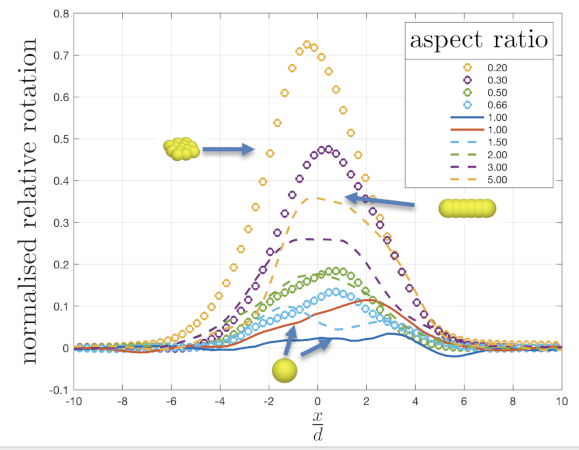ABSTRACT
In granular materials, friction and particle shape at the microscale strongly influence the bulk response, particularly the material’s rotational behaviour. These factors affect how grains rotate, interact, and dissipate energy. Using discrete-to-continuum (D2C) upscaling methods, we map discrete particle data onto continuous fields to study these effects. When rotational behaviour is included, additional micropolar fields and new dissipative mechanisms emerge. Through simulations of a split-bottom shear cell, we show how friction and particle shape give rise to these micropolar effects—such as couple stresses and relative rotations—that localise in shear bands and influence material dissipation. Understanding these effects paves the way for more realistic continuum models of granular matter.

SPEAKER
 Mr. Max Winkelmann is a PhD student jointly affiliated with the University of Twente, the Netherlands, and the University of Edinburgh, UK, working under the supervision of Stefan Luding, Vanessa Magnanimo, and Stefanos-Aldo Papanicolopulos. His research focuses on the theoretical mechanics of granular media, with particular interest in linking particle-scale interactions to continuum-scale descriptions. He obtained his BSc and MSc degrees in Engineering Science from the Technical University of Berlin, where he specialised in continuum material theory. He is currently in the final year of his PhD studies.
Mr. Max Winkelmann is a PhD student jointly affiliated with the University of Twente, the Netherlands, and the University of Edinburgh, UK, working under the supervision of Stefan Luding, Vanessa Magnanimo, and Stefanos-Aldo Papanicolopulos. His research focuses on the theoretical mechanics of granular media, with particular interest in linking particle-scale interactions to continuum-scale descriptions. He obtained his BSc and MSc degrees in Engineering Science from the Technical University of Berlin, where he specialised in continuum material theory. He is currently in the final year of his PhD studies.






